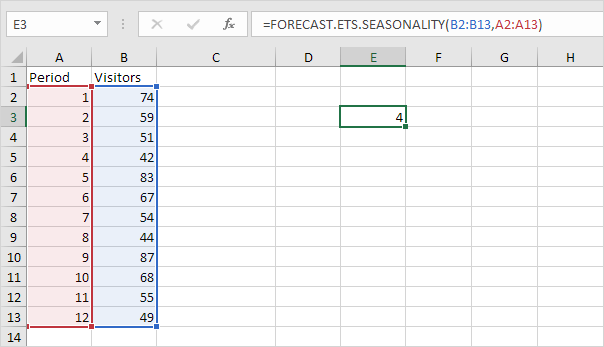
The default level of 95% confidence can be changed using the up or down arrows. A smaller interval implies more confidence in the prediction for the specific point. Confidence interval can help you figure out the accuracy of the prediction.

The confidence interval is the range surrounding each predicted value, in which 95% of future points are expected to fall, based on the forecast (with normal distribution). If your data is seasonal, then starting a forecast before the last historical point is recommended.Ĭheck or uncheck Confidence Interval to show or hide it. Using all of your historical data gives you a more accurate prediction. However, if you start the forecast too early, the forecast generated won't necessarily represent the forecast you'll get using all the historical data. Starting your forecast before the last historical point gives you a sense of the prediction accuracy as you can compare the forecasted series to the actual data. When you pick a date before the end of the historical data, only data prior to the start date are used in the prediction (this is sometimes referred to as "hindcasting"). You'll find information about each of the options in the following table. If you want to change any advanced settings for your forecast, click Options. You'll find the new worksheet just to the left ("in front of") the sheet where you entered the data series. In the Forecast End box, pick an end date, and then click Create.Įxcel creates a new worksheet that contains both a table of the historical and predicted values and a chart that expresses this data. In the Create Forecast Worksheet box, pick either a line chart or a column chart for the visual representation of the forecast. On the Data tab, in the Forecast group, click Forecast Sheet.

To reactivate your Office applications, reconnect to the Internet.Tip: If you select a cell in one of your series, Excel automatically selects the rest of the data. If you don’t connect to the Internet at least every 31 days, your applications will go into reduced functionality mode, which means that you can view or print your documents but cannot edit the documents or create new ones. You should also connect to the Internet regularly to keep your version of Office up to date and benefit from automatic upgrades. Internet access is also required to access documents stored on OneDrive, unless you install the OneDrive desktop app. For Microsoft 365 plans, Internet access is also needed to manage your subscription account, for example to install Office on other PCs or to change billing options. However, Internet access is required to install and activate all the latest releases of Office suites and all Microsoft 365 subscription plans. You don’t need to be connected to the Internet to use Office applications, such as Word, Excel, and PowerPoint, because the applications are fully installed on your computer.


 0 kommentar(er)
0 kommentar(er)
